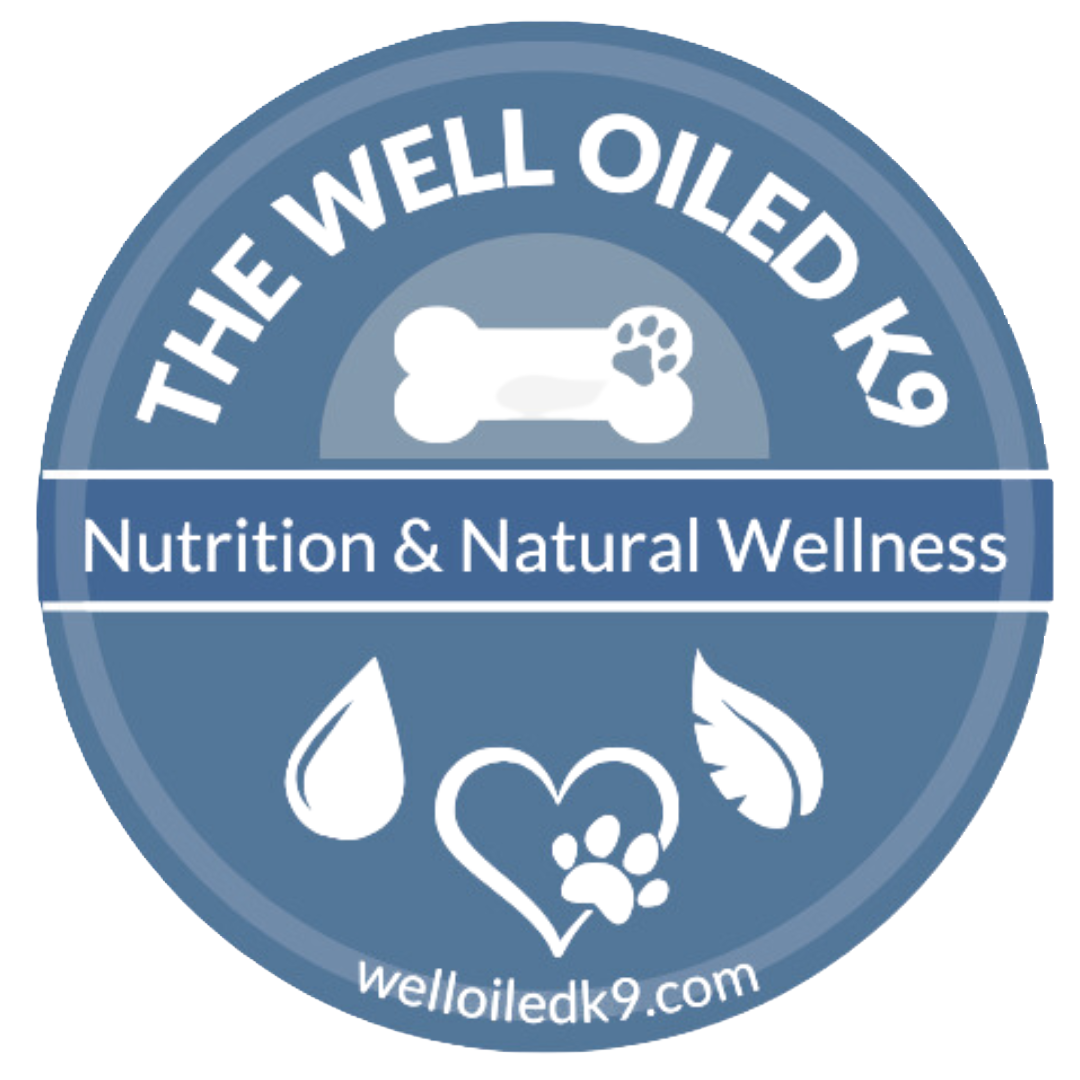The Risks of Flea and Tick Products
Flea and Tick Products Risks Are Not Worth It
Next time you go to put that flea and tick topical on your dog, or give him an oral dose — say these words out loud
“Come here, my precious Fido, I want to put a neurotoxin in your blood stream for the next 30 days”
Avoid The Risk of Flea and Tick Products & Choose Natural Options Instead
That sounds horrible, doesn’t it? I mean who wants to do that? But the truth is, these products are neurotoxins in your dog’s bloodstream day after today. It’s how the fleas and ticks die after biting your dog. These chemical constituents are truly not safe and can create an added burden on your dog’s liver and could eventually compromise your dog’s health and longevity.
I know you read these posts and think “scare tactic”. I’m sorry, but it’s true and if I can save you the heartache of a dog with a health concern as he ages, yea, I hope I scare you in the right way.
I often hear from my clients, “I have never had a problem before”. For some dogs, an immediate reaction can be severe, and for others, there is never a problem until one day there is a health concern.
Flea and Tick Preventatives — Are Not Preventatives at all.
We need to understand that traditional products are not preventative at all. They are not even repellants!
Topicals, orals, and even the collars are toxic substances that move into your dog’s bloodstream so that when the dog is bitten by a flea or tick — the insect dies. That’s right, the fleas and ticks must BITE your dog in order to die.
Think about that as a constant stream of toxins in your dog’s body. These toxins don’t always cause an immediate reaction or disease for your dog, but over time toxins of all types compound in the body, and the liver and other organs/cells simply fail in their ability to process these toxins out, leaving us with an unwell pet. For some dogs and cats — the reaction is immediate, including seizures, lethargy, redness, diarrhea, vomiting, etc. So if your vet tells you a reaction is “normal” — it’s NOT. It’s the body rejecting the toxin. It might be “common” for them to see, but it is not NORMAL to the body.
Wouldn’t it be better to repel them from the start? (Essential Oils can repel)
Side Effects of Flea and Tick Products
If you love your pet, and I know you do, please take a few minutes and do a little research on the side effects of traditional flea and tick products Even when you watch the commercials on TV you’ll see warnings that include things from mild diarrhea to extreme seizures and even death. Yes, that’s a scary thought — but it’s true. And it’s even more true for our aging pets, pets with underlying health issues, and those carrying unseen chemical burdens in their cells and tissues. It only takes one dose… and it even though you’ve had no problems before - the next dose could be the tragic one.
Friends — I’ve seen it too many times and I beg you heed the warnings — especially since there are safe, natural, alternatives that work to prevent fleas and ticks.
Reduce the chemical burden you place on your dog’s liver and health by using natural flea and tick remedies.
These products attack the mitochondria of your dog’s system and his/her body will fight back as long as it can until it fails and disease is present. Issues can occur in the form of reaction at the site of application, diarrhea or vomiting following application, lethargy following application, seizure, auto-immune diseases, aggression, anxiety, or eventual cancer.
I beg you to make a change today. Do your research on the products before you use them again. Just look them up.
Flea and Tick Product Side Effects
Many of the side effects observed are often considered normal or acceptable by many veterinarians and pet parents. It’s not normal, it’s a response to chemical exposure. Your dog may seem to be back to normal in a short period of time but these issues could compound each time you administer them or when interacting with other environmental factors, age, stress, etc. In my opinion, the side effect risk is simply not worth the risk, especially knowing that safe alternatives exist, easy treatments are available if you spot a flea or tick, they are not preventative anyway, and many environments don’t have infestations to start!
Aggression
Anxiety
Personality changes
Seizures
Disorientation
Wobbling or unstable gate
Sensitivity to touch
Abnormal vocalizations
Urinary or fecal incontinence
Death
Recent Studies are now showing that these products can be found in the bloodstream of many children!
Long-Term Side Effects Of Flea and Tick Products:
Auto-Immune Issues
Kidney Issues
Allergies & Skin Issues
Digestive Issues
Natural Alternatives to Flea and Tick Products
I haven’t had to put anything “on” my dogs in years. You don’t have to either.
The biggest option is nutrition. It is at the core of all things wellness. Real, Fresh, Whole dog food that keeps your dog’s skin healthy. Fleas and ticks are less drawn to healthy animals, even furry ones.
When we need a little added boost in the spring and summer seasons you have some options
Essential Oils & Essential Oil-based insect sprays
Essential Oil-based Shampoo & Conditioners
Vitamin B Supplementation
Diatomaceous Earth - in the yard and maybe even on the dog
A little freshly grated garlic in your fresh food diet.
Detox Your Dog After Use Of Flea and Tick Products
Many of us fall into the category of having used these products for years. We may even have seen a few of the side effects and continued to use them. Don’t beat yourself up. You’re not alone and followed the guidance you’ve been given by professionals.
It is worth taking action today to begin a detox protocol to start trying to support your dog’s liver and start some antioxidant work, change your environment to further reduce as much toxin exposure as possible, etc.
Visit My Protocols Section for the Flea and Tick Detox Protocol or the Liver Cleanse — or schedule time to chat about your next steps, alternatives, etc.
Flea and Tick Product Safety Considerations
If you MUST (and I beg you not to) use some of the more traditional products that are not natural — please do not use the combo products. When you Do — you’re adding multiple toxins to the body simultaneously. It would be advised if you must use these products that flea and tick products be administered 2 weeks separately from your Heartworm preventative. And not with any other products.
Do not use the 8-month collars, 3-month injectables, or other long-term products. Use monthly dose products only. Why — to avoid the mega dose going in all at the same time. Friends these are not products that simply last longer — they are stronger dosages.
EPA Reports Seresto collars are the most complained about produt in the history of he EPA. There have been over 100K incident, 2700 pet deaths, and over 800 reported incidents of human involvment. A class action law suit was settled at $15,000,000. This produt is not good for your dog.
FDA Warnings on Isoxazoline Class of products:
The FDA has finally come around to admitting that Flea and Tick products in the Isoxazoline category are dangerous and now require FDA warning labels on these products. Yet, they are still being sold.
What products are in the isoxazoline class?
Bravecto (fluralaner) tablets for dogs
Bravecto (fluralaner) topical solution for cats and dogs
Bravecto Plus (fluralaner and moxidectin) topical solution for cats
Bravecto 1-month (fluralaner) tablets for dogs
Credelio (lotilaner) tablets for dogs and cats
Nexgard (afoxolaner) tablets for dogs
Simparica (sarolaner) tablets for dogs
Simparica Trio (sarolaner, moxidectin and pyrantel) tablets for dogs
Revolution Plus (selamectin and sarolaner) topical solution for cats
According to the Project Jake survey results, of 1,594 dogs given a flea treatment (1,325 of which contained isoxazoline), 66.6% were reported to have experienced an adverse event, including muscle tremors, ataxia (loss of muscle control), seizures and death
What should I do if my pet has an adverse drug event while using an isoxazoline product?
If your dog or cat experiences any adverse event while using an isoxazoline product, first consult your veterinarian.
The FDA continues to monitor adverse drug event reports for these products and encourages pet owners and veterinarians to report adverse drug events. You can do this by reporting to the drugs’ manufacturers, who are required to report this information to the FDA, or by submitting a report directly to the FDA.
To report suspected adverse drug events for these products and/or obtain a copy of the Safety Data Sheet (SDS) or for technical assistance, contact the appropriate manufacturers at the following phone numbers:
Merck Animal Health (Bravecto): 800-224-5318
Elanco Animal Health (Credelio): 888-545-5973
Boehringer Ingelheim (Nexgard): 888-637-4251
Zoetis (Simparica, Revolution Plus): 888-963-8471
If you prefer to report directly to the FDA, or want additional information about adverse drug experiences reporting for animal drugs, see How to Report Animal Drug and Device Side Effects and Product Problems.
Pet owners and veterinarians who have additional questions can contact AskCVM@fda.hhs.gov or call 240-402-7002.

